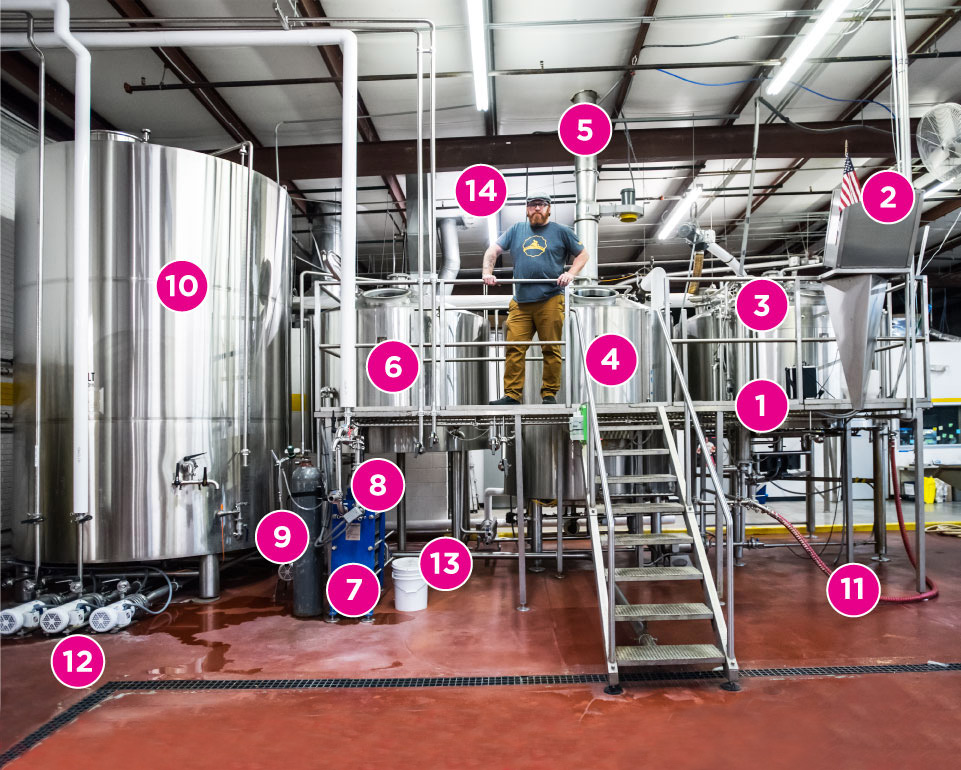1. Platform allows brewer to see into the vessels and monitor the process
2. Brewhouse controls for pumps, temperatures, valves, etc.
3. Mash/lauter tun; at start of brewing process, milled malted barley is mixed with hot water (called mashing); enzymes convert starches into sugar, and sugar water (wort) is transferred to the wort kettle (called lautering)
4. Wort kettle boils liquid to kill unwanted yeast, bacteria; hops added
5. Stack fan pulls steam during boil
6. After boil, wort is pumped into whirlpool that separates solids (hops, proteins) from clear wort; wort is transferred to fermentation vessel, where yeast is added
7. Heat exchanger cools wort to 68 degrees as it transfers to fermenter
8. Flow meter measures flow rate and total volume of wort as it transfers to fermentation vessel
9. Oxygen storage (essential for yeast growth, added to wort after cooling)
10. Hot liquor tank stores water at 180 degrees for brewing and cleaning
11. Brewer’s hose is rubber, food-grade hose used to transfer liquids in
a brewery
12. Pump transfers hot water to the brewhouse
13. White plastic bucket, super-essential in many brewing tasks
14. Taproom manager Matt Peeples is wearing a Rock Ryder beer t-shirt, which is available for purchase in the taproom. His pants are of unknown provenance. You’re on your own when it comes to those.







